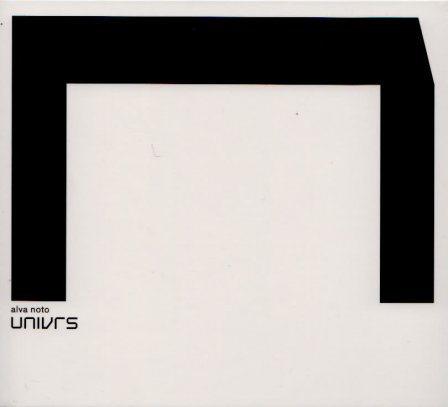Information: the paradigm around which technology-saturated societies are built and defined, lying on the core of any social, cultural, or political manifestation. Next to Ryoji Ikeda, Carsten Nicolai – better known as Alva Noto – is one of the artists most concerned about information and the way it defines any communicative process in the modern world, creating sonic and visual artistic statements that explore digital data as a new space with structures to be inhabited: information as habitat. A parallel might be drawn between Ikeda and Nicolai. Both artists have explicit worries about the classic mind/body dichotomy, trying to bridge the sensory world of physical energy with a parallel world of pure digitized data. Both are constantly pointing out the material nature of sound and challenging human perception by exploring the boundaries of the range of human hearing. Both try to integrate sound, image, and source code by means of deconstructing the invisible substance the digital world is made of. Precisely, their common interests are best exploited in their project cyclo., which saw them reunited again earlier this year. Individually, however, while Ikeda attempts to represent the macroscopic world of informational-made virtual spaces connected through networks (especially in his Datamatics project), Alva Noto’s recent work has tried to reach the microscopic realm of bits, the digital atomic scale, birthplace to anything that can be created and conceived in post-industrial societies.
In 2008’s unitxt, Alva Noto turned to the basic elements of information translated as rhythmic patterns. univrs can be seen as a further exploration into this topic, going even deeper into the multiple layers that compose electronic sounds, but this time referencing digital language as a universally expanding entity, supported by the audiovisual nature of the project. (Some of the visual images were obtained by using the sounds as real-time control signals.) The album is intended to have some sort of abstract narrative as shown by the tracks’ titles, referring to the processes of sound generation itself, starting from simple patterns to more intricate structures, as if it could be possible to witness the miracle of binary creation and reproduction. Indeed, numbers are able to replicate themselves, and tracks like “uni fac” and “uni mode” introduce the listener to the generative processes of rhythm breeding, where sequences of superimposed beats start typewriting fractions of digital genome. The mostly contemplative sounds exhibited throughout the album are not based in the minimalist repetition/variation technique, presenting instead ever-changing structures, similar to atoms colliding, forming sound molecules (“uni syc”) and the next moment disintegrating them into glitch (“uni deform”). Transfixing beeps and blips are constantly acting in front of a background of almost tangible beats, as if scrutinizing into the roots of digital sound could actually materialize the music into objects.
Noto takes some primary sonic forms in electronic music (tones, noises, sweeps) and inspects their asymmetrical properties: the zero and the unity – the fundamental particles – two opposed and complementary forces, coexisting not in harmonic equilibrium, but slightly unbalanced and out of proportion, geometrical but not symmetric in nature (just as the album cover). For instance, “uni rec” and its suffocated breathing patterns, leading to the sporadic apparitions of subtle noise bands swirling among the data constellations. univrs’ centerpiece is 10-minute-long “uni iso,” in which a sustained chord leads a journey through sterile landscapes, where inorganic tone-like beings appear and disappear randomly. The closest univrs gets to sounds emanating from an organic being comes by the hand (and voice) of french artist Anne-James Chaton (who had previously collaborated with Noto on unitxt) in the track “uni acronym.” This time, Chaton sounds even more automaton-like (Kraftwerk’s ‘voice of energy’ comes to mind), a flesh and circuitry hybrid reciting apparently meaningless three-letter acronyms that in fact stand for widely spread condensed semantic forms: from companies to scientific terms, from products to institutions. This is the true power of information: It does not live exclusively in abstract codified form, but it actually shapes human language and thought, permeating every single aspect of modern life.
Information in the digital world is all about deterministic chaos, and univrs perfectly addresses the ‘cyberpunkish’ mystique surrounding this fact. Conceptually complex but mildly impressive in its final outcome, the music in this album wanders around well-known and well-charted territories; Nicolai’s landscapes might be cold, arid, and gray (or high-speed alternated black and white), but they are not lifeless, with plenty of musical forms arising and extinguishing in every spotted location. Just as in Borges’ Aleph (which Nicolai had referenced previously in his Aleph-1 project) – a point in space containing all other points – information can be compressed into a single entity encapsulating a whole universe, in the same way that expanded musical sounds can be condensed into any of the pieces on this album. Only this time, from all the potential vastness waiting to be compressed and recreated, univrs only foresees a small portion of it.
